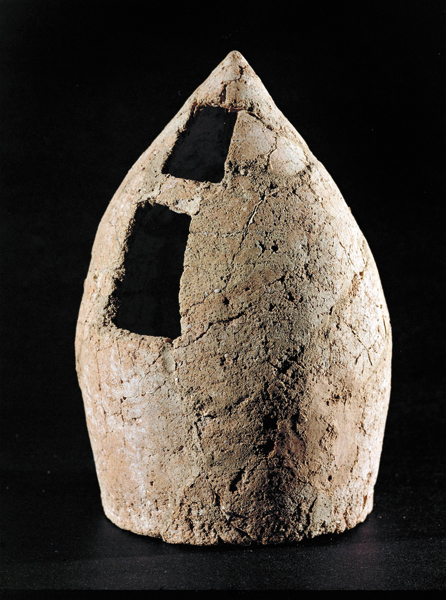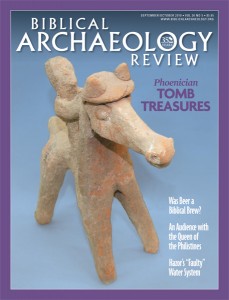
A. Mycenean oil lamp
B. Egyptian toothbrush holder
C. Chalcolithic bone box
D. Assyrian helmet
E. Model of Canaanite grain silo
Answer: C. Chalcolithic bone box
During the Chalcolithic period (c. 4500–3300 B.C.E.), ceramic and stone repositories called ossuaries were used to store and ritually house the bones of the deceased after the flesh had decayed. While many Chalcolithic ossuaries were fashioned to look like buildings or even animals, others—like this pointed, squat and crudely made ceramic vessel from the site of Ben Shemen, which stands about a foot tall—took the form of simple jars outfitted with small rectangular openings through which the bones were inserted. Scholars are unsure exactly why some ossuaries were made in the form of jars, but most presume the shape imitated some aspect of the Chalcolithic world that conveyed ideas about life and death. Perhaps they were modeled after the silos that stored the grain surpluses necessary for human existence; or maybe they were symbolic representations of the womb, suggesting ideas about life, death and rebirth. Still other scholars have suggested these jar ossuaries were made to look like cocoons and thus symbolized the transformation of the soul into something beyond the physical realm.
Already a library member? Log in here.
Institution user? Log in with your IP address.

